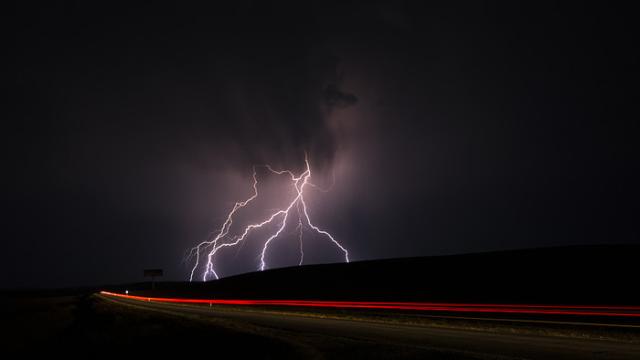Scientists Test Systems to Predict, Control Lightning
Scientists say they have developed a system that uses machine learning to predict when and where lightning will strike.
Researchers report the system is able to predict lightning strikes up to 30 minutes before they happen within a 30-kilometer area.
The research was led by engineers from the Swiss Federal Institute of Technology in Lausanne, Switzerland. The results were reported in the publication Climate and Atmospheric Science.
Lightning is a strong burst of electricity in the atmosphere. It is one of the oldest observed weather events on Earth. It can strike between clouds or between a cloud and the ground. Since lightning carries an extremely powerful electrical charge, it can be destructive and deadly.
It is difficult to know exactly how many people die of lightning-related causes. European researchers have estimated that between 6,000 and 24,000 people are killed by lightning worldwide each year. The strikes can also cause power outages, destroy property, damage electrical equipment and start forest fires.
For this reason, climate scientists have long sought to develop methods to predict and control lightning. In the United States and other places, ground-based sensing devices are used to identify strikes as they happen. But, no system has been created to effectively predict or stop lightning.
The system tested in the experiments uses a combination of data from weather stations and machine learning methods. The researchers developed a prediction model that was trained to recognize weather conditions that were likely to cause lightning.
The model was created with data collected over a 12-year period from 12 Swiss weather stations in cities and mountain areas. The data related to four main surface conditions: air pressure, air temperature, relative humidity and wind speed.

The atmospheric data was placed into a machine learning algorithm, which compared it to records of lightning strikes. Researchers say the algorithm was then able to learn the conditions under which lightning happens.
"Once trained, the system made predictions that proved correct almost 80 percent of the time," the Swiss Federal Institute of Technology said in a statement. "It can now be used anywhere."
Amirhossein Mostajabi is a PhD student at the institute who led the development of the method. He said current systems for gathering such data are slow and complex and require costly collection equipment like radar or satellites.
"Our method uses data that can be obtained from any weather station," Mostajabi said. This will improve data collection in very remote areas not covered by radar and satellite or in places where communication systems have been cut, he added.
The researchers plan to keep developing the technology in partnership with a European effort that aims to create a lightning protection system. The effort is called the European Laser Lightning Rod project.
Scientists working on the Paris-based project are experimenting with a laser technology that could someday control lightning activity. The idea is that powerful, ground-based lasers can be positioned in the sky to direct energy from lightning.
The experiments involve the use of lasers to transfer lightning charges from clouds to the ground. The method uses a lightning rod placed at the base of the laser to take in electrical charges from lightning in the clouds.
Researchers say laboratory testing has shown that lasers can be used as a way to guide lightning to a direct, safe path to the ground. They hope that such technology can one day be deployed as protection against lightning strikes. Possible uses could be at power plants, airports or places where large crowds gather.
I'm Bryan Lynn.











